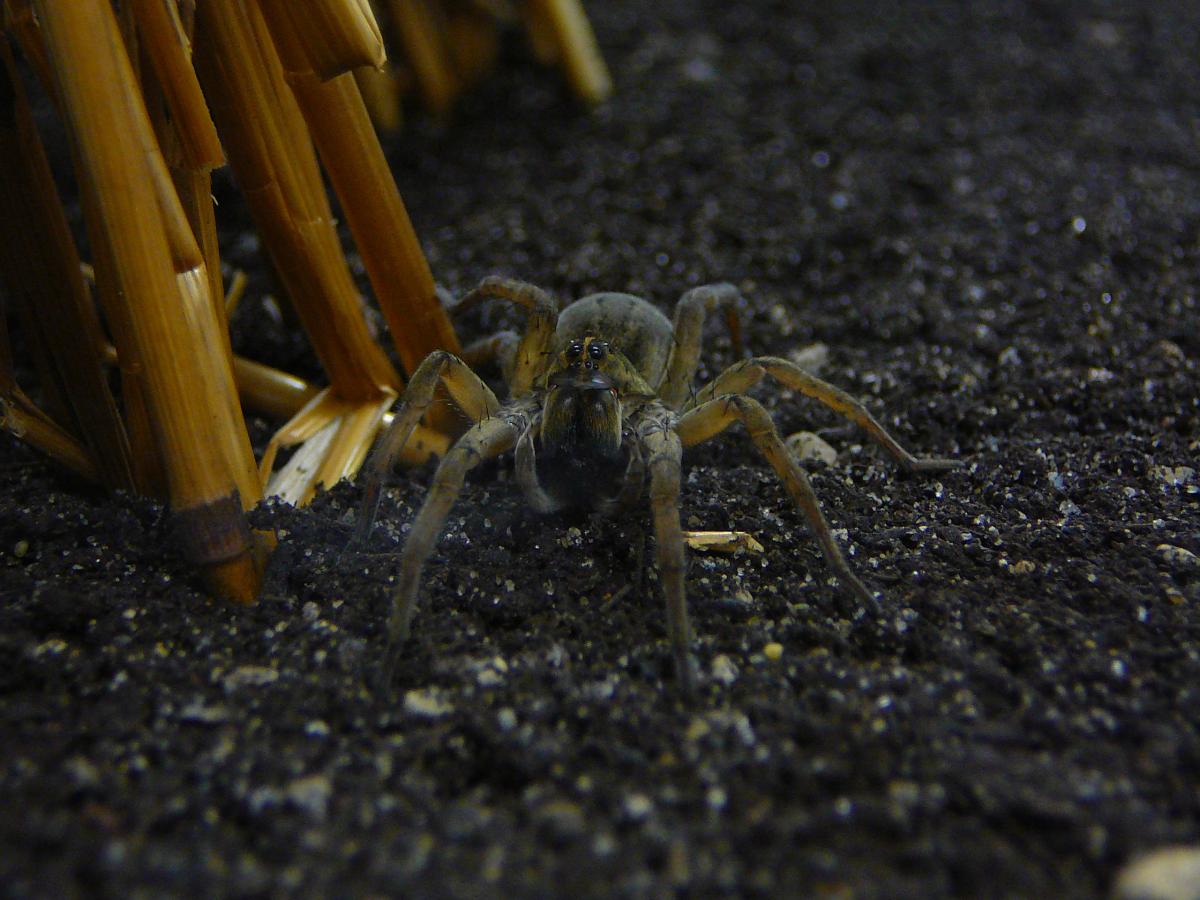Predators linking the brown and green worlds
Submitted by editor on 7 June 2016. Get the paper!
Get the paper! The concept of a trophic cascade, where predators eat herbivores and thus indirectly benefit plants, has been around for a long time in ecology. Trophic cascades have been documented in all habitats with a wide variety of species. However, systems that involve cascades from predators to detritivores to detritus have received considerably less attention that plant-based cascades. The gap in knowledge between the “green world” (i.e., predator-herbivore-plant cascades) and “brown world” (i.e., predator-detritivore-detritus cascades) is frequently cited by researchers trying to narrow the gap. As a graduate student, I kept reading these papers and wondering why all of them repeated the same mantra about cascades in the brown world being understudied. A productive conversation with Os Schmitz, who has published extensively on green world cascades, catalyzed my thought process and lead to my decision to synthesize what is known about brown world cascades.
The concept of a trophic cascade, where predators eat herbivores and thus indirectly benefit plants, has been around for a long time in ecology. Trophic cascades have been documented in all habitats with a wide variety of species. However, systems that involve cascades from predators to detritivores to detritus have received considerably less attention that plant-based cascades. The gap in knowledge between the “green world” (i.e., predator-herbivore-plant cascades) and “brown world” (i.e., predator-detritivore-detritus cascades) is frequently cited by researchers trying to narrow the gap. As a graduate student, I kept reading these papers and wondering why all of them repeated the same mantra about cascades in the brown world being understudied. A productive conversation with Os Schmitz, who has published extensively on green world cascades, catalyzed my thought process and lead to my decision to synthesize what is known about brown world cascades.

"One of the spiders I studied in graduate school. My work with these spiders inspired the ideas that ultimately took shape in the Oikos manuscript."
We conducted an extensive literature search and found 56 studies of predator impacts on detritus, measured as changes in decomposition and nutrient cycling. Although the number of studies we found was greater than anticipated, based on the claimed dearth of brown cascade literature, our analysis revealed how much work still remains ahead of ecologists. The studies conducted are highly biased in terms of habitat, method, and study organisms used. Furthermore, the results of these studies do not reveal a clear, overall pattern to help ecologists understand how the addition or loss of predators from a habitat might cascade to alter decompositional processes.
Although most people think of predator effects on their prey in terms of consumption, predators actually have stronger impacts through nonconsumptive methods. The behavioral responses of prey, such as vigilance that reduces feeding time, have stronger cascading impacts than the loss of a few individuals due to predation. This concept of a nonconsumptive cascade has been thoroughly researched in the green world, but surprisingly little attention has been given to applying this concept to the brown world. We found only 9 studies, one of which was published by some of the authors of this paper, that investigated nonconsumptive predator effects in the brown world.
Our paper highlights gaps in the literature, synthesizes the current data to reveal what patterns may be taking shape, and spurs future research efforts. Importantly, we propose a new concept of “multichannel fear”, wherein the nonconsumptive effects of predators could propagate simultaneously through the green and brown worlds. We provide detailed recommendations for designing experiments to understand predator impacts in the brown world, including experiments that could confirm the existence of multichannel fear. We hope that our paper will contribute to a more complete understanding of how predators can impact the world around them and connect seemingly distinct habitats.
Michael Sitvarin